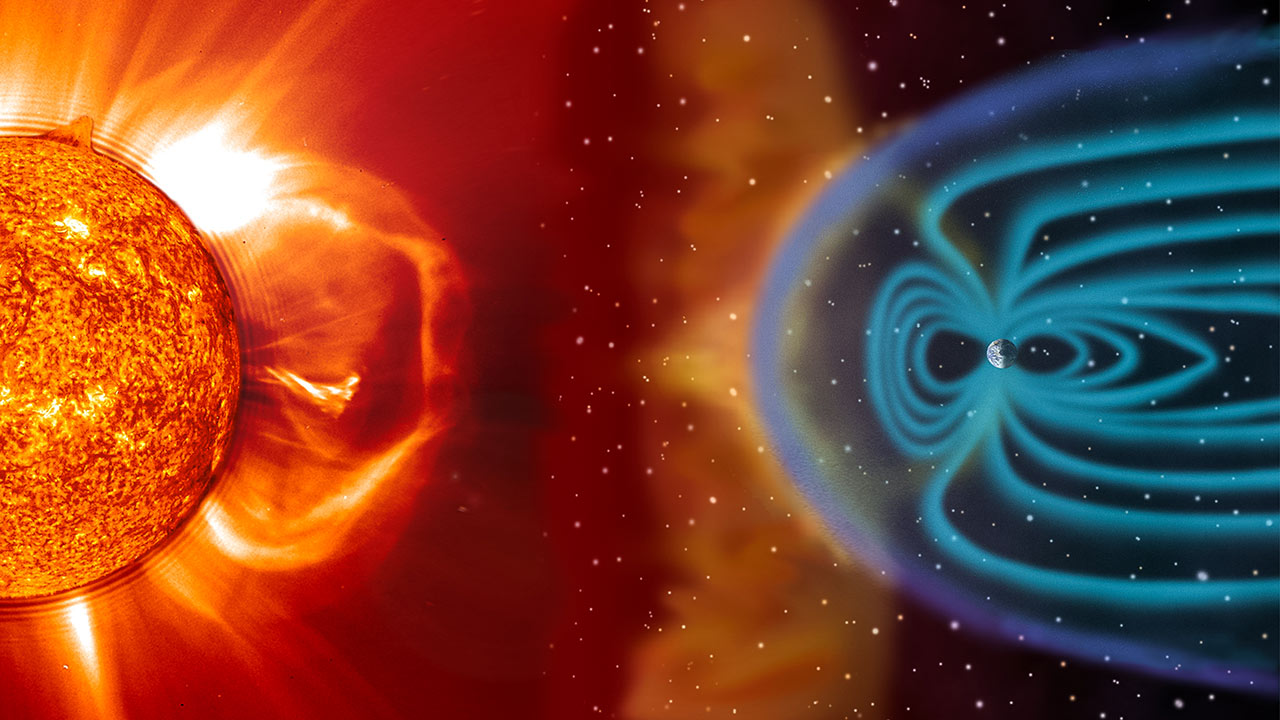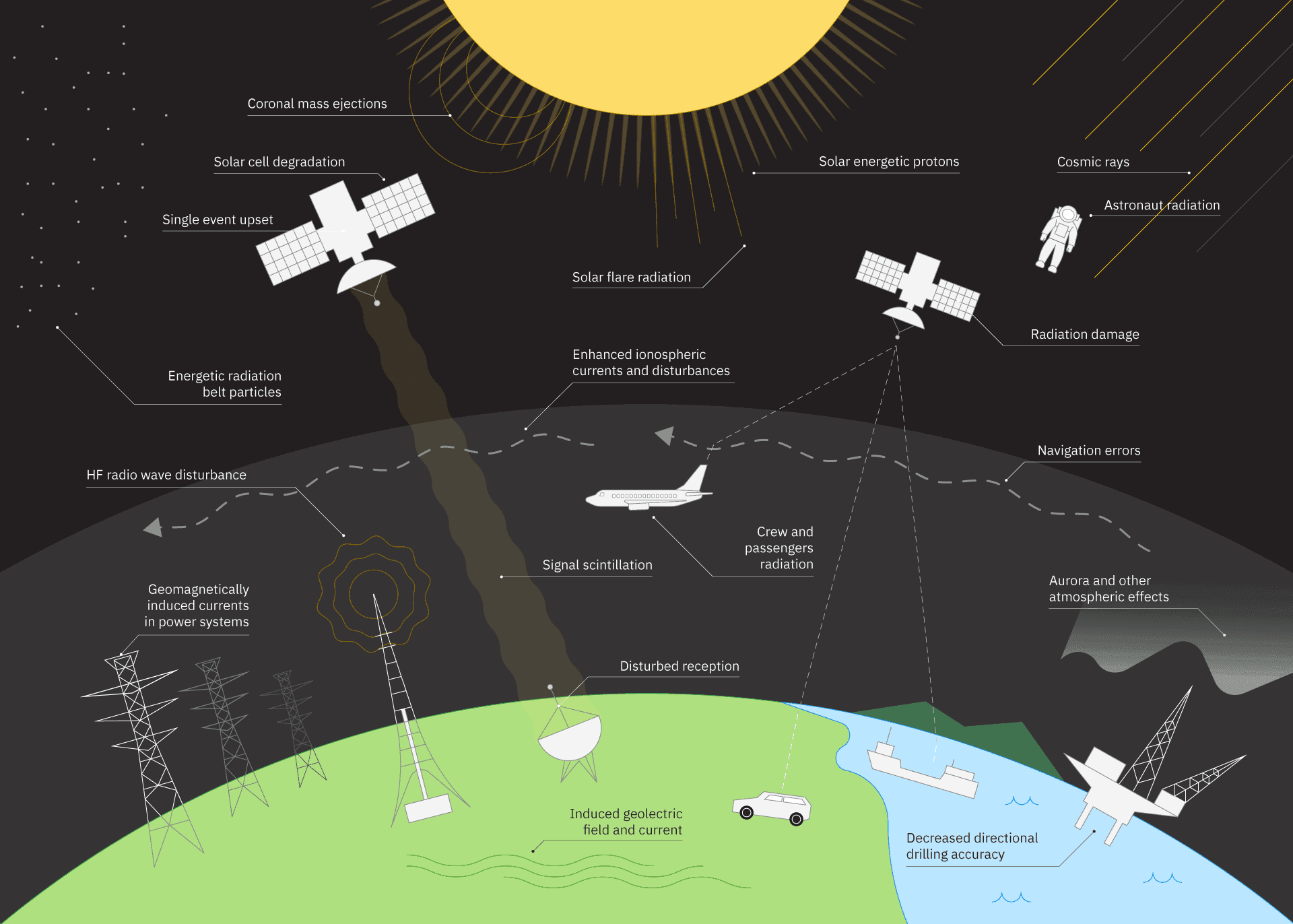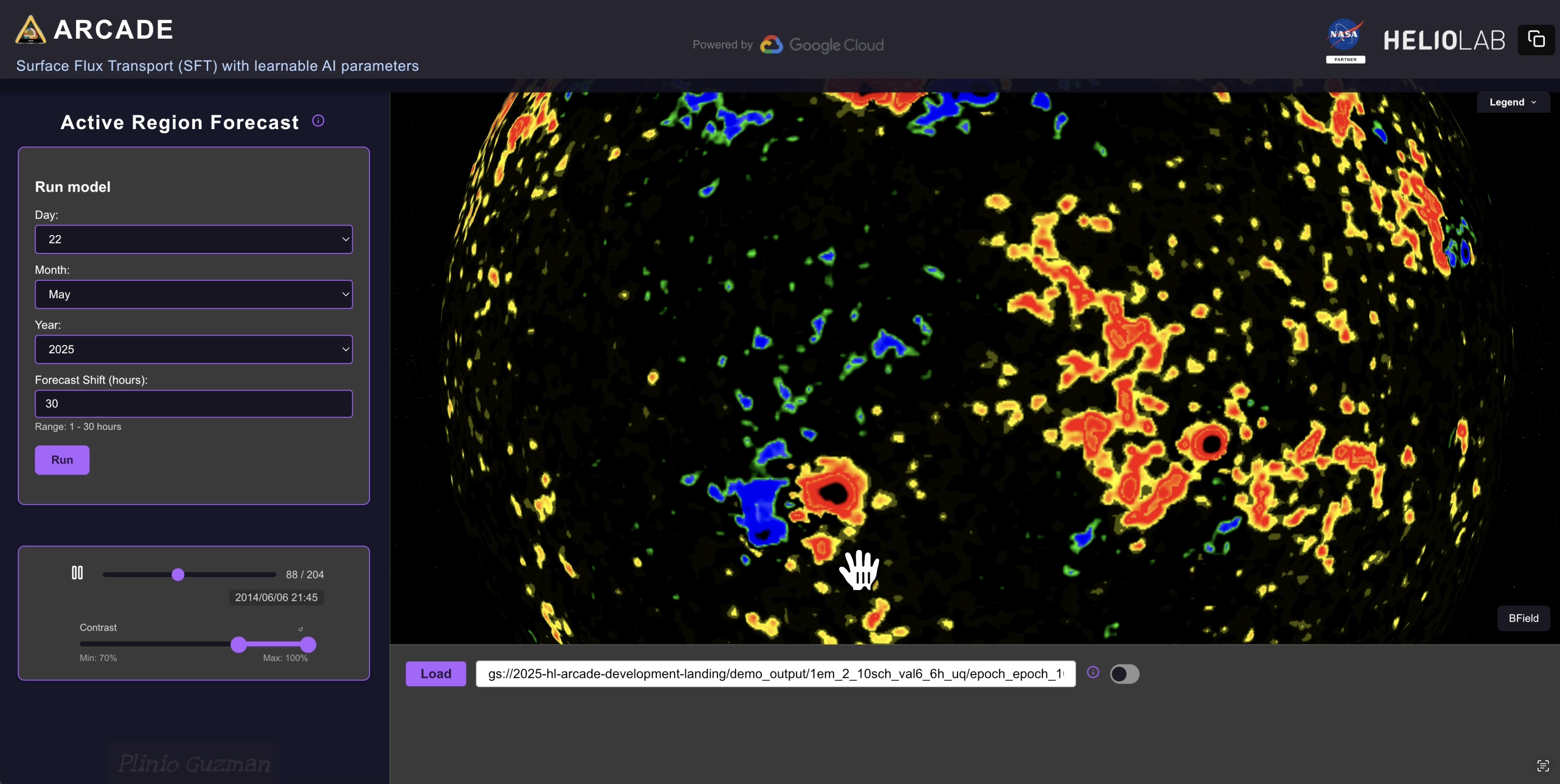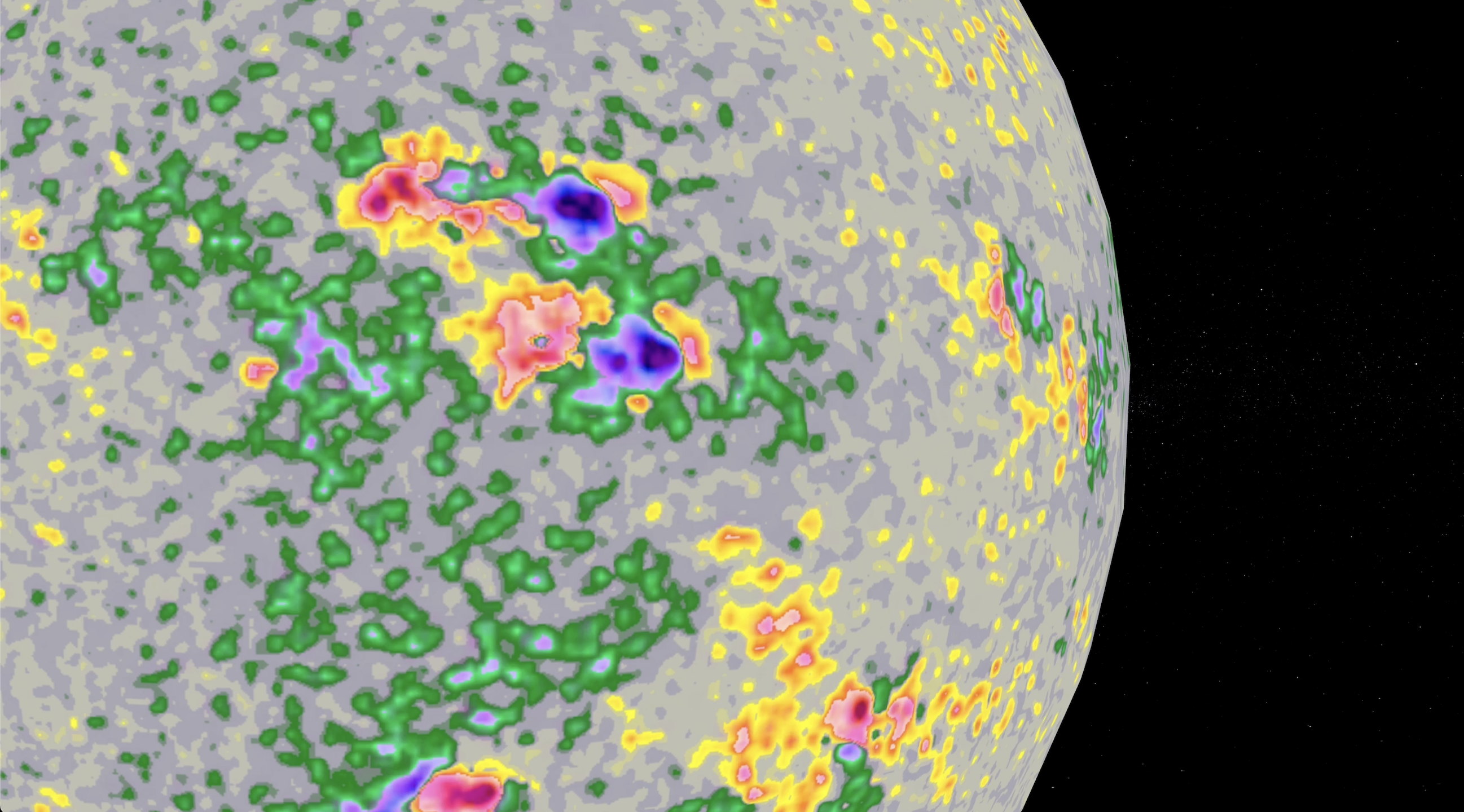The sun’s temper threatens Earth. Every so often, magnetic fields deep within the sun twist and snap - releasing storms of energy that race across space at the speed of light. These outbursts - solar flares and coronal mass ejections - can fry satellites and rockets worth millions, scrambre GPS, ground flights, and even black out entire cities. They can even pose a dangerous dose of radiation to astronauts.
For decades, scientists watched these storms unfold, often with little warning.

But, what if we could see the Sun’s future activity - hours before an eruption begins?
During Frontier Development Lab's Summer 2025 Heliolab program, our team set out to answer that question. We built a forecasting system that fuses classical physics with deep learning, creating a new way to predict how active regions on the Sun evolve. These regions, where tangled magnetic fields emerge and destabilize, are the earliest harbingers of space weather.
By combining ResNet neural networks with differential equations that describe the governing equations behind solar magnetic transport, we created a model that doesn’t just learn patterns—it does so in the language of physics. The model generates outputs in physical terms - think magnetic field strengths and flux velocities - rather than blackbox embeddings. Think of it as a bridge between neural nets and heliophysics equations and observation instrumentation.
NASA, NOAA, and the Urgency of Forecasting
NASA’s heliophysics charter is clear: understand the Sun and protect the technology and people under its influence. Missions like the Parker Solar Probe and Solar Orbiter now deliver petabytes of raw data, mapping the Sun’s dynamic atmosphere across the heliosphere.
NOAA’s Space Weather Prediction Center already provides forecasts to pilots, satellite operators, and even aurora chasers. But their current visualizations are coarse—aggregated snapshots that lack detail. Our work aims to complement these systems, offering finer-grained, interpretable, and uncertainty-aware predictions.
It’s not just agencies moving fast. IBM, for instance, announced a Heliophysics Foundation Model on Hugging Face only days after our HelioLabs presentation—evidence of a global race to harness AI for the Sun.

The Tools of Prediction
Our approach modernizes traditional surface flux transport (SFT) models, which simulate how magnetic flux spreads across the Sun through rotation, meridional flow, and turbulence. These physics equations have long been the backbone of solar forecasting—but they struggle with scale and complexity.
Deep learning helps bridge that gap:
- ResNet-based networks learn from historical data, extending physics models with data-driven insights.
- Uncertainty quantification produces not just a prediction, but a confidence range—a Gaussian distribution that tells us what the model is sure of, and where it hesitates.
- The system is modular, designed to plug in newer architectures like transformers as the field evolves.
On the technical side, the team ran experiments on NVIDIA A100 GPUs in the cloud, using modular PyTorch pipelines, PDE solvers, and orchestration via Airflow and serverless functions.
A Window into the Sun: The Forecasting Dashboard
Of course, raw data and code aren’t enough—humans need to see the Sun to understand it. That’s why we built a custom React-based dashboard that projects model outputs onto a 3D rotatable globe of the Sun.
With it, scientists can:
- Run forecasts by date and horizon
- Scrub through frames on a timeline to track magnetic evolution
- Compare data side-by-side (e.g., model vs. uncertainty layers)
- Adjust color scales and contrast to spot anomalies
- Export animations for presentations or public sharing
Powered by DeckGL for rendering, the dashboard transforms streams of .png outputs from Google Cloud Storage into interactive solar forecasts. What once lived in notebooks and log files becomes visual, explorable, and intuitive.

Why It Matters Now
With solar activity rising toward the peak of its 11-year cycle, the stakes are high. A hybrid of physics and AI won’t just push research forward—it could give Earth critical hours of early warning before a solar flare disrupts life as we know it.
This is more than a model.
👉 It’s a prototype of how science can merge fundamental physics with modern AI, and how tools like an MCP can transform forecasts into interactive experiences to actively interrogate data with immediate visual feedback.
🧠 By making the Sun’s hidden patterns visible, we move toward a future where humanity is no longer a passive spectator—but a co-inquirer in understanding existence.
Dowload My Library
I have a massive library of even more videos and images on this topic that will keep you enthralled for days. You can download them below for free, becasuse it's worth sharing.

